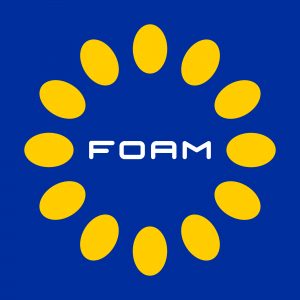The ability to structure the intensity, phase and polarization of light opens new possibilities in engineering light distributions for interaction with various types of media, with applications in high-resolution imaging, nanoparticle manipulation, surface plasmon excitation, sensing, and laser machining.
Light can be structured in a number of ways with even the simplest, structured intensity, resulting in a surprisingly large number of applications. The well-established technique of optical tweezing [1], for example, uses the dipole force associated with the intensity gradient of a focused Gaussian beam to trap and manipulate small particles such as dielectric spheres, bacteria, small metal particles, and even strands of DNA, with applications in biological science and microrheology [2].
Light can also have phase structure, and light with a helical phase structure is known to carry orbital angular momentum (OAM) [3, 4]. This can be transferred to a trapped particle causing rotation around the centre of the beam [5]. These beams, which have ring-shaped intensities with an optical vortex along the axis, have found wide application in optical micromanipulation and trapping, where the addition of the phase structure essentially converts the optical tweezers into an optical spanner or wrench [6].
Beams carrying OAM are also of interest as a resource in quantum information. Unlike the spin angular momentum (SAM) associated with left- and right-circularly polarized light that is used as an optical implementation of a qubit in quantum information, OAM is not restricted to two orthogonal states. It is of therefore of interest for high capacity quantum communication and information systems. As it allows large amounts of information to be carried on a single photon, new protocols for quantum key distribution with significantly increased data transfer rates are possible [7].
In addition to intensity and phase structure, light can also have polarization structure. This fully-structured light (FSL) [8-10] lies at the heart of an emerging and extremely promising field of research with many applications in optics, such as high-resolution microscopy and imaging, optical trapping and manipulation [11, 12], and quantum communication and cryptography [13]. Very recently, we identified the difference in the number of left- and right-circularly polarized photons as corresponding to optical helicity [14] and showed that gradients in optical helicity can produce a force that interacts only with chiral molecules [15]. In general, beams have a spatially homogeneous polarization distribution, such as linear or circular. However, fully-structured light, which has a spatially inhomogeneous polarization structure, has been identified as having additional beneficial properties, including tighter focusing [16] and more stable nonlinear propagation [17].
References:
- A. Ashkin, J. M. Dziedzic, J. E. Bjorkholm, and S. Chu, Opt. Lett. 11, 288 (1986).
- I. Bishop, T. A. Nieminen, N. R. Heckenberg, and H. Rubinsztein-Dunlop, Phys. Rev. Lett., 92, 198104 (2004).
- L. Allen, M. W. Beijersbergen, R. Spreeuw, and J. Woerdman, Phys. Rev. A 45, 8185 (1992).
- A. M. Yao and M. J. Padgett, Adv. Opt. Photon. 3, 161 (2011).
- H. He, M. Friese, N. R. Heckenberg, and H. Rubinsztein-Dunlop, Phys. Rev. Lett. 75, 826 (1995).
- N. B. Simpson, K. Dholakia, L. Allen, and M. J. Padgett, Opt. Lett. 22, 52 (1997).
- J. Leach et al., Science 329, 662 (2010).
- Q. Zhan, Adv. in Optics and Photonics 1, 1 (2009).
- M. Beckley, T. G. Brown, and M. A. Alonso, Opt. Express 18, 10777 (2010).
- E. J. Galvez, S. Khadka, W. H. Schubert, and S. Nomoto, App. Opt. 51, 2925 (2012).
- R. Beth, Phys. Rev. 50, 115 (1936).
- M. Friese, T. Nieminen, N. R. Heckenberg, and H. Rubinsztein-Dunlop, Nature 394, 348 (1998).
- A. Poppe et al., Opt. Exp. 12, 3865 (2004).
- R. P. Cameron, S. M. Barnett and A. M. Yao, New J. Phys. 14, 053050 (2012).
- R. P. Cameron, S. M. Barnett and A. M. Yao, New J. Phys. 16, 013020 (2014).
- R. Dorn, S. Quabis, and G. Leuchs, Phys. Rev. Lett. 91, 233901 (2003).
- F. Bouchard et al. Phys. Rev. Lett. 117, 233903 (2016).
